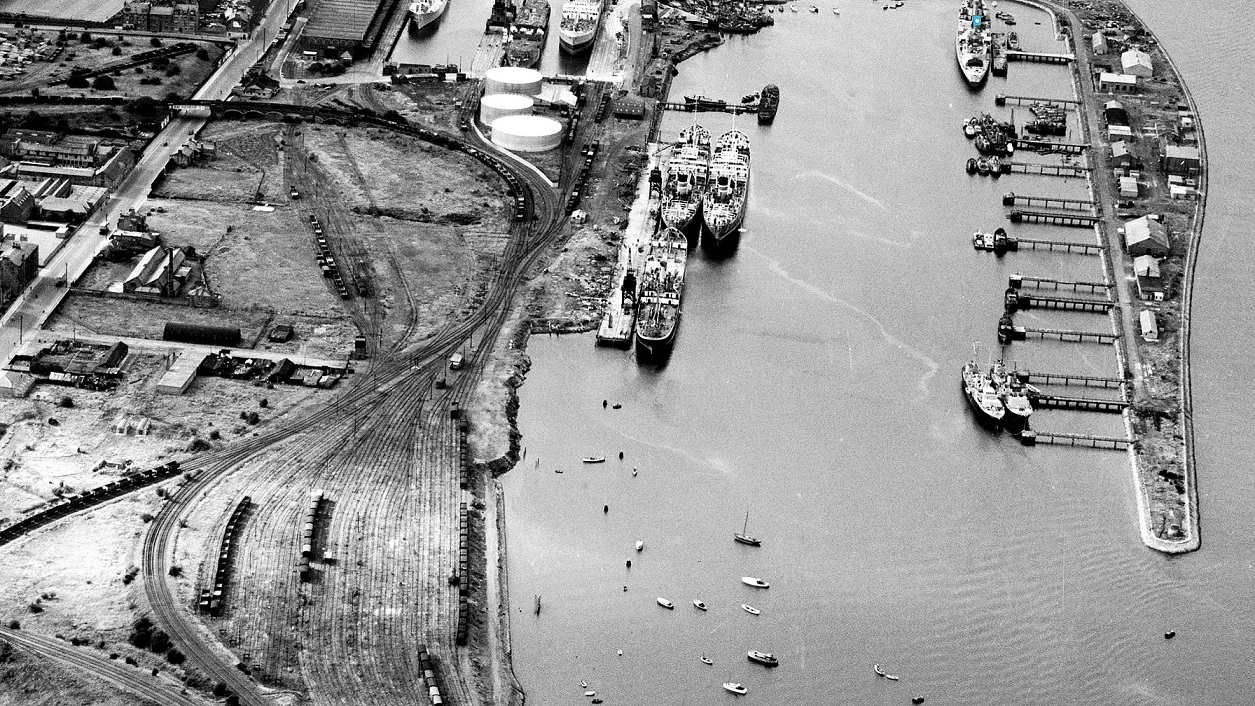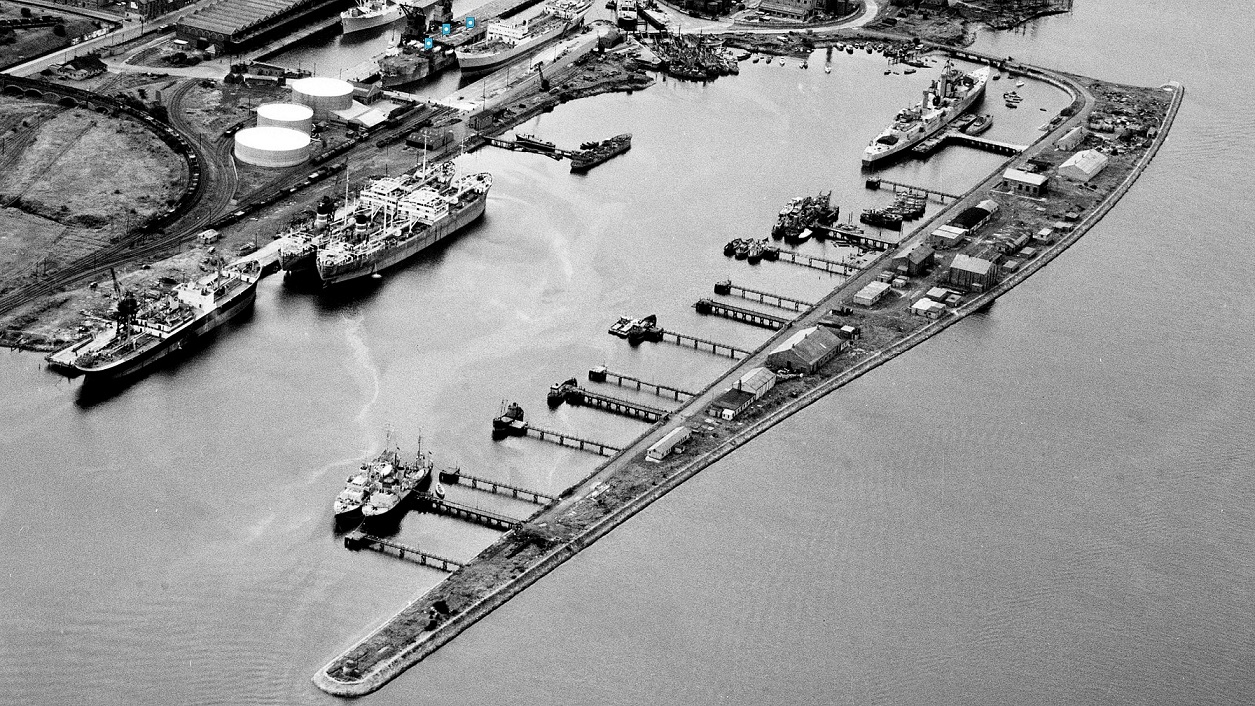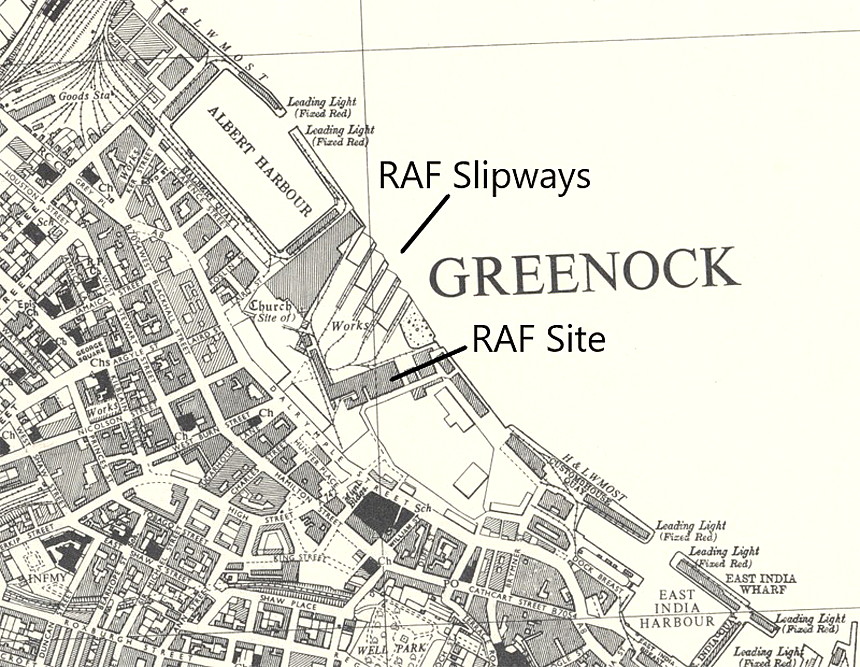Greenock flying sites
Note: This map only shows the position of Greenock town within the UK.
GREENOCK: Civil seaplane base
Note: This picture was obtained from Google Earth ©
The original military seaplane base is "RAF Greenock 1". Before WW2 this was a licenced seaplane base for many years and was taken over by the RAF in 1940. Due to serious air raid damage in 1941, a new site further west, ("RAF Greenock 2"), was then established.
NOTES: On the 15th August 1932 British Flying Boats Ltd began for one week only a regular return flight from GREENOCK to Belfast, (MUSGRAVE CHANNEL). Using the Saro Cloud G-ABXW.
It is also reported that British Amphibious Air Line operated a RENFREW-GREENOCK-ROTHESAY service for just one week in August 1932. If so they probably used the Saro Cutty Sark G-ABBC. The main service operated by British Amphibious Air Line in 1932 was from BLACKPOOL FORESHORE (LANCASHIRE) to the ISLE of MAN.
GREENOCK: Civil airfield?
NOTES: My attempts to discover more have come to nought here so I would much appreciate more information. I discovered info stating that from 1935 to 1938 West of Scotland Air Services operated a Fox Moth from GREENOCK to SHISKINE on the Island of Arran the location of which seems to indicate a land-plane was being used? It appears these services were flown by Margaret Cunnison, yet another lady pilot employed in this region in the 1930s.
Another note says that in 1938 she was flying a Short Scion Senior for West of Scotland Air Services from GREENOCK to the Hebrides. This was almost certainly a seaplane version which does beg the question, was the Fox Moth she had previously flown fitted with floats?
She later become a significant pilot in the ATA (Air Transport Auxiliary) during WW2.
A MICHAEL T HOLDER GALLERY
PART ONE
Note: It is always a bit of a problem in compiling a 'Guide' such as this, in as much as new information keeps coming to light. This is of course great stuff and most welcome - but it does of course mean that, in most cases, the story has to be re-written. And, who knows what is yet to come? The items above were added in April 2022, and indicate that the Great Harbour was the embarkation point for passengers using the seaplane services. But, the slipway mentioned appears to be, without too much doubt, situated to the west of the Great Harbour. So, can we safely assume that this was used for safe storage and maintenance purposes, and the aircraft were taxied to the Great Harbour to collect and deliver passengers?
Another small aspect is that I suppose we can assume that many passengers arrived by train. But where? Our best guess is Bogston station, (see first map above), and then by charabanc, (or taxi), to the harbour - where presumably a launch took them out to the aircraft? Or. did they have a small, low jetty? Possibly of the pontoon type?
The second item above was published in The Scotsman on the 19th March 1937. The fifth item was published in the Aberdeen Press and Journal on the 6th May 1935, and the seventh item was published, again in The Scotsman, on the 12th May 1937.
I find it very interesting to discover that these seaplane services were being offered from Greenock, in the main, in parallel with landplane services operating from RENFREW airport. There has to be a good reason presumably, but what might it be? Only the very wealthy, and there were only a few of them, could afford to fly on these routes. Was it perhaps that because so much time was spent flying over the sea, they felt a seaplane was a safer option?
PART TWO
Note: These items above show the original civil seaplane base, established in the 1930s. Often used by amphibious types which, with its slipways, made it suitable for use in WW2 by Consolidated PBY-5 Catalinas.
PART THREE
The items below show the new base, established in 1941 after the original base was badly damaged by Luftwaffe air raids.
Note: The last item is from my Google Earth © derived database.
GREENOCK: RAF Station (Flying boat base)
Location: In the River Clyde on the east side of Greenock initially, then moved to the west side
Period of operation: WW2
Alighting area: In the Clyde in any direction except downstream from Glasgow
NOTE: Almost certainly initially the civilian licenced seaplane base of the 1930s.
GREENOCK: Seaplane Alighting Area and seaplane base
Operated by: WW2: Scottish Aviation
Location: Cairds Yard was the works and flying operations took place on the Firth of Clyde nearby
Period of operation: 1930s to end of WW2 only?
NOTES: Listed on Admiralty chart No:2006 in the 1930s as a licensed seaplane operating area
Scottish Aviation ran a Short Sunderland repair and overhaul facility and a Consolidated PBY-5 Catalina reception centre.
Without much if any doubt (?), probably the site shown above as "RAF Greenock 1".
C MacKay
This comment was written on: 2018-02-09 22:39:55Just a wee note. I read Strouds book on British Aviation. He says that our old farm, Askernish, on South Uist was used as an airfield. There is also an Air Britain image of a Heinkel HE 115 at Cairds Yard , maybe something to do with Helensburgh
We'd love to hear from you, so please scroll down to leave a comment!
Leave a comment ...
Copyright (c) UK Airfield Guide


































